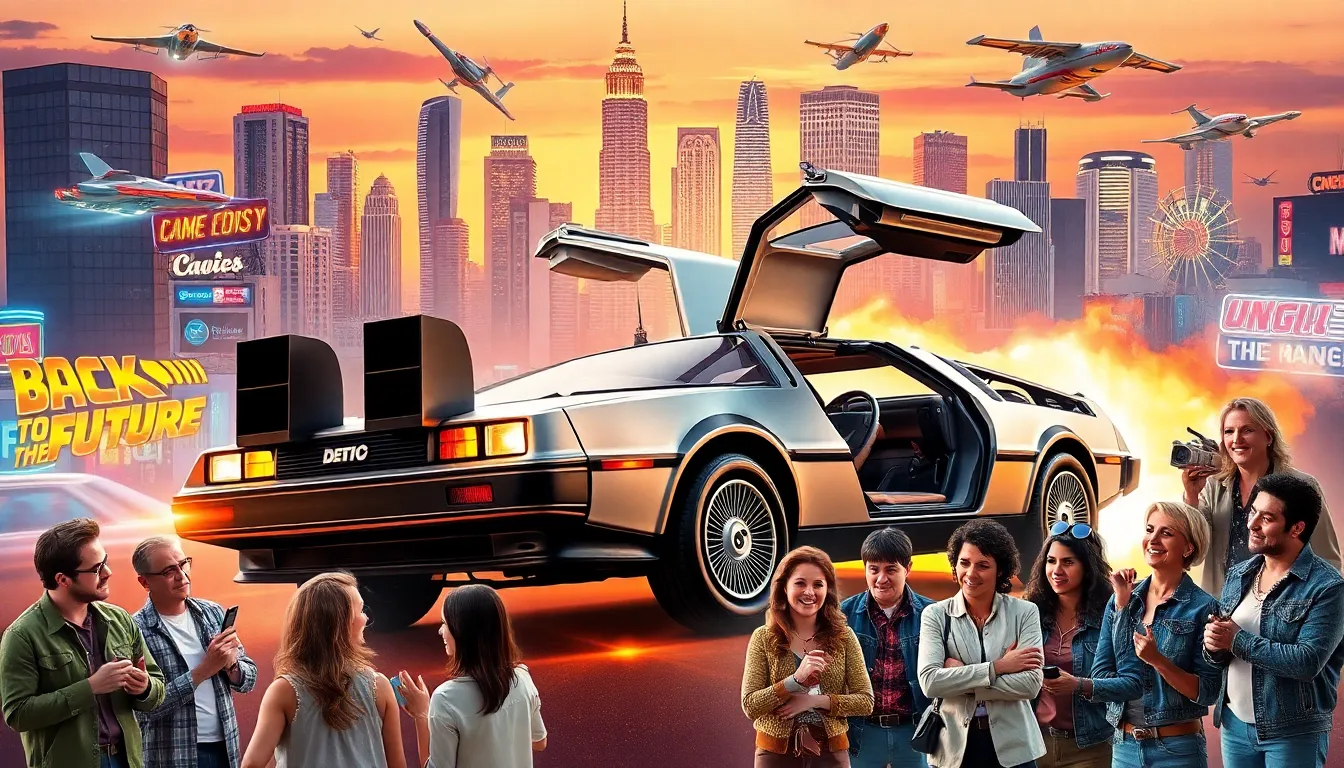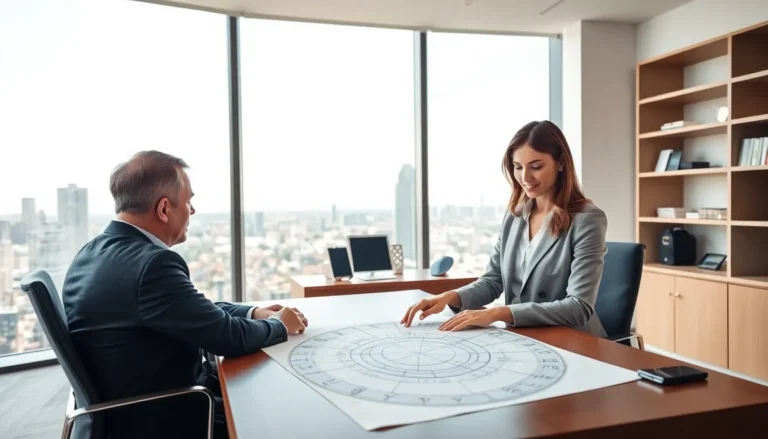When it comes to the future, few films have nailed it quite like “Back to the Future.” This beloved franchise not only captured our imaginations but also painted a vivid picture of what tomorrow might look like. Who can forget the flying cars, self-lacing shoes, and a world where you could order a pizza with just a thought? Spoiler alert: we’re still waiting for most of those innovations. In this text, we’ll explore the fascinating predictions made by the trilogy and see how they stack up against our current reality. Buckle up: this ride is going to be radical.
Table of Contents
ToggleOverview Of Back To The Future Series

The “Back to the Future” franchise, created by Robert Zemeckis and Bob Gale, exploded onto the scene in 1985. Following the misadventures of Marty McFly and the eccentric Doc Brown, the films seamlessly combined comedy, sci-fi, and a bit of adventure. From the original to the sequels, the story revolves around time travel, using a DeLorean as a time machine, who wouldn’t want one of those?
Fans enjoyed groundbreaking special effects and witty dialogue, making these films iconic in pop culture. Each installment showcased various aspects of time travel, from past to future, making viewers ponder the implications of changing history. The movie’s charm lies in both the entertaining plot and the array of technological predictions that seemed way ahead of their time.
Key Technological Predictions
In terms of tech, the “Back to the Future” series made some jaw-dropping predictions. One of the most talked-about is the hoverboard, introduced in “Back to the Future Part II.” While we might not have the exact model Marty zoomed around on, companies are indeed flirting with hover technology today. It appears the fantasy of riding a floating board may not be so far-fetched after all.
Then there are the self-lacing shoes, a concept that truly captured hearts. Nike even introduced a version of these shoes inspired by the film, called the Nike Adapt, but the price tag might leave your wallets crying. Also, the idea of video calls wasn’t just futuristic whimsy: it’s now a reality thanks to smartphones and platforms like Zoom. Marty’s experience showed how personal connections could transcend time and space, a sentiment all too familiar in our digital age.
Cultural Predictions and Their Accuracy
Culturally, the film made some thought-provoking predictions about society. In “Back to the Future Part II,” set in 2015, we saw a world with electronic billboards and interactive advertisements. Fast forward to today, and we’re surrounded by digital advertising that seems to have come right from the movie’s pages.
But, not all predictions panned out. The portrayal of future family dynamics, where kids had more freedom and less responsibility, sparked discussions around parenting and societal changes that didn’t necessarily align with reality. Also, the film suggests that by 2015, sports betting and instant information sharing would dominate culture. While some aspects have certainly advanced, they don’t completely reflect the broader cultural shifts we’ve experienced.
Environmental Predictions from the Film
Environmental concerns also found their way into the narrative, notably through the depiction of climate issues. In “Back to the Future Part II,” it’s suggested the world would face severe environmental challenges due to neglect and pollution. Fast forward to today, climate change discussions are at the forefront, making these predictions eerily relevant.
The franchise holds up a mirror to our world, prompting viewers to reflect on choices and their consequences. While the film’s humorous take on the future is entertaining, it raises critical questions about our environment and how we treat the planet.
The Influence of Back To The Future on Future Innovations
“Back to the Future” didn’t just predict the future: it inspired real-life innovations. Engineers and inventors often cite the franchise as motivation for developing technologies. The DeLorean time machine remains an iconic symbol, influencing designs and concepts in vehicles today. Inspired by the films, companies are experimenting with hover technology and smart devices, pushing the boundaries of what’s possible.
Also, creatives across various industries still draw inspiration from the storylines, drawing parallels between the film’s themes and modern technological revolutions.
Comparing Predictions With Current Reality
Now, how do these predictions fare against today’s technology? Well, while flying cars remain a dream mostly confined to sci-fi, advancements in electric vehicles and autonomous driving are making impressive strides. The world has yet to embrace the authentic hoverboard, but our fascination with the concept fuels innovations in personal transportation solutions.
Adding to this, the self-lacing technology has materialized in some forms, albeit with hefty price tags. The prominent presence of virtual meetings reflects the film’s foresight into how we would communicate. While we may not be running from Biff Tannen at the Skynet Family Arcade just yet, many concepts from the series are inching closer to reality.






